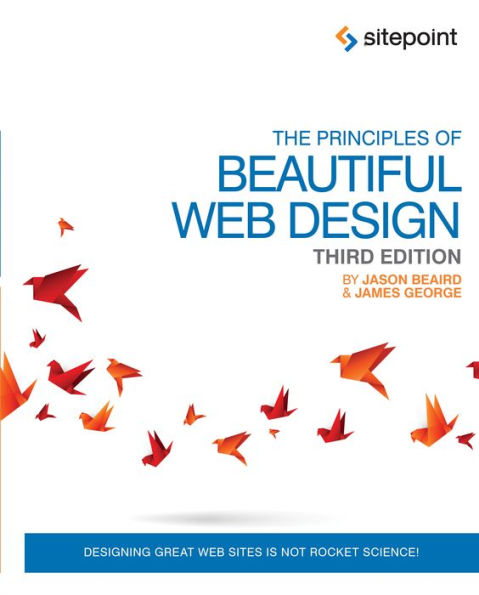Table of Contents
Preface xiii
Who Should Read This Book xiv
What's in This Book xiv
Conventions Used in This Book xv
Code Samples xv
Tips, Notes, and Warnings xvi
Supplementary Materials xvi
Want to Take Your Learning Further? xvi
Chapter 1 Layout and Composition 1
The Design Process 2
Discovery 2
Exploration 4
Implementation 4
Defining Good Design 5
Web Page Anatomy 8
Grid Theory 10
The Rule of Thirds 11
960 Grid System 13
Balance 16
Symmetrical Balance 16
Asymmetrical Balance 18
Unity 21
Proximity 22
Repetition 23
Emphasis 24
Placement 24
Continuance 25
Isolation 26
Contrast 26
Proportion 27
Bread-and-butter Layouts 29
Left-column Navigation 30
Right-column Navigation 30
Three-column Navigation 31
Finding Inspiration 32
Using a Morgue File 32
Trends: Popular Favorites 34
Fresh Trends 36
Resizing: Fixe, Fluid, or Responsive Layouts 40
Fixed Width Layouts 40
Fluid Layouts 40
Responsive Design 41
Screen Resolution 43
Frameworks 45
Application: Knoxville Reflexology Group 47
Getting Started 48
Chapter 2 Color 53
The Psychology of Color 53
Color Associations 54
Color Temperature 60
Chromatic Value 61
Saturation 61
Color Theory 101 62
Red, Yellow, and Blue, or CMYK 63
The Scheme of Things 65
A Monochromatic Color Scheme 66
An Analogous Color Scheme 69
A Complementary Color Scheme 72
Split-complementary, Triadic, and Tetradic 77
Other Variants 79
Creating a Palette 80
Hexadecimal Notation 80
Color Tools and Resources 81
Color Scheme Designer 3 82
Adobe Kuler 82
Colour Lovers 83
Pictaculous 84
Colour Contrast Check 85
Application: Choosing a Color Scheme 86
Chapter 3 Texture 89
Point 90
Line 91
Shape 92
Rounded Corners 95
Rotation 97
Shapes and Layout 98
Volume and Depth 100
Perspective 100
Proportion 101
Light and Shadow 102
Pattern 104
Building Texture 109
Aged, Weathered, Worn, and Nostalgic Style 109
Clean and Grainy 112
Handcrafted Scrapbook 114
Whimsical Cartoon Style 116
Minimal Texture 117
Starting Your Own Textural Trends 119
Application: Logo and Content 120
Chapter 4 Typography 123
Taking Type to the Web 125
Web Fonts with @font-face 127
Self-hosted Web Fonts 127
Web Font Services 128
Text Image Replacement 129
Anatomy of a Letterform 132
Text Spacing 134
Horizontal Spacing 134
Vertical Spacing 136
Text Alignment 137
Typeface Distinctions 138
Serif Fonts 139
Sans-serif Fonts 142
Handwritten Fonts 144
Fixed-width Fonts 145
Novelty Fonts 148
Dingbat Fonts 149
Finding Fonts 151
Free Font Galleries 151
Commercial Font Galleries 151
Individual Artists and Foundries 151
Choosing the Right Fonts 152
Setting Font Size and Line Height 154
Using Punctuation and Special Characters 155
Application: The Fine Print 156
Chapter 5 Imagery 159
What to Look For 160
Legitimate Image Sources 163
Take It or Make It 163
Stock Photography 164
Getting Professional Help 170
How Not to Impress 172
Google Ganking 172
Hotlinking 173
Clipart 174
Creative Cropping 175
Photoshop Adjustments 179
File Formats and Resolutions 184
Creative Image Treatments 186
Using Images to Enhance Images 186
Using Pure CSS to Enhance Images 188
Application: The Finishing Touches 191
Onward and Upward 194



